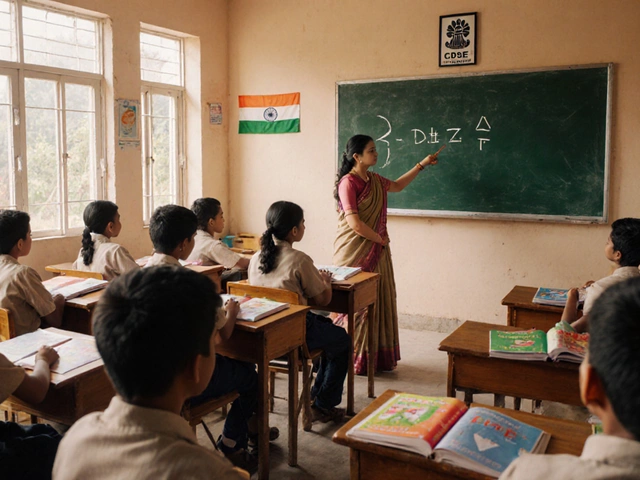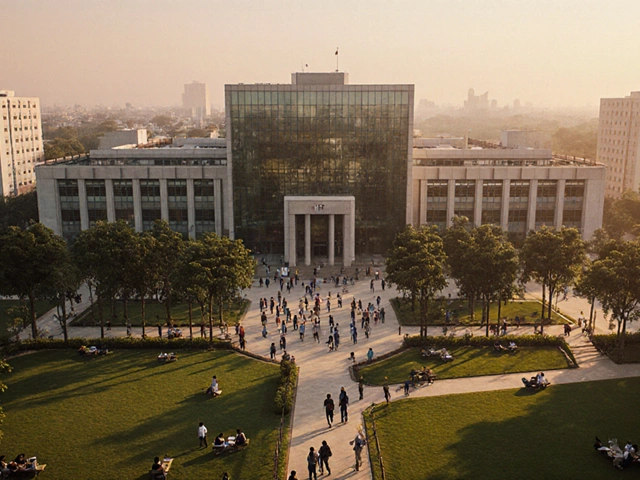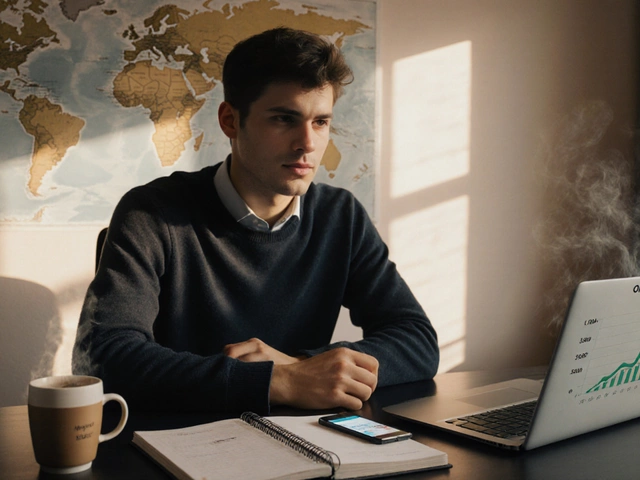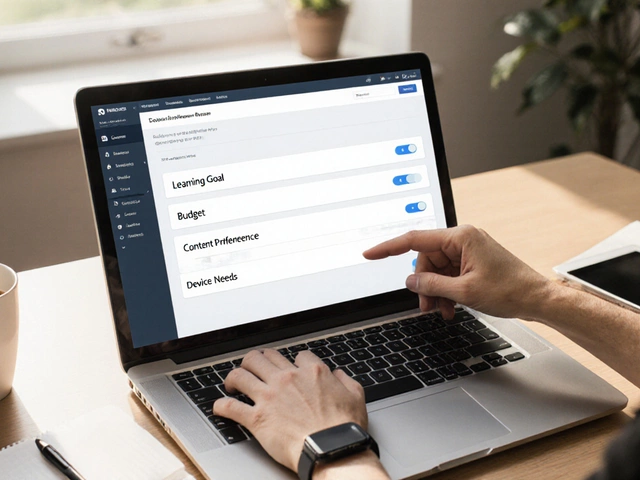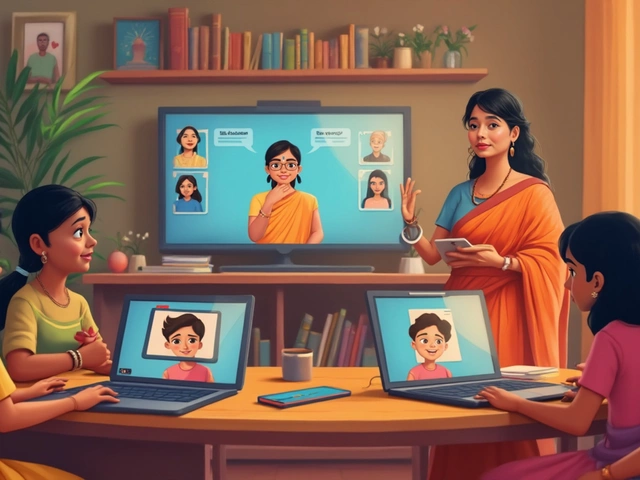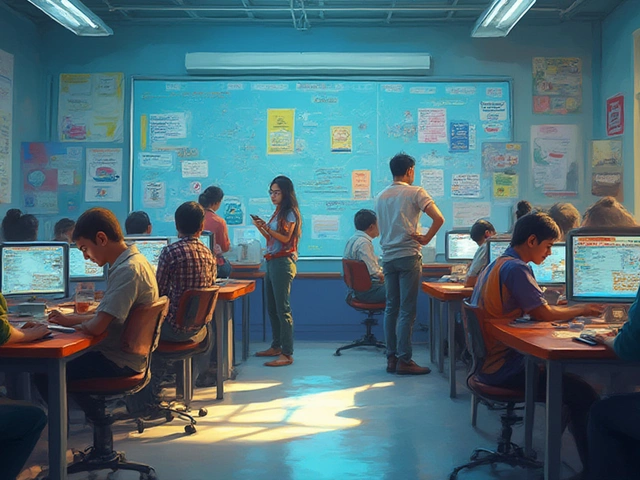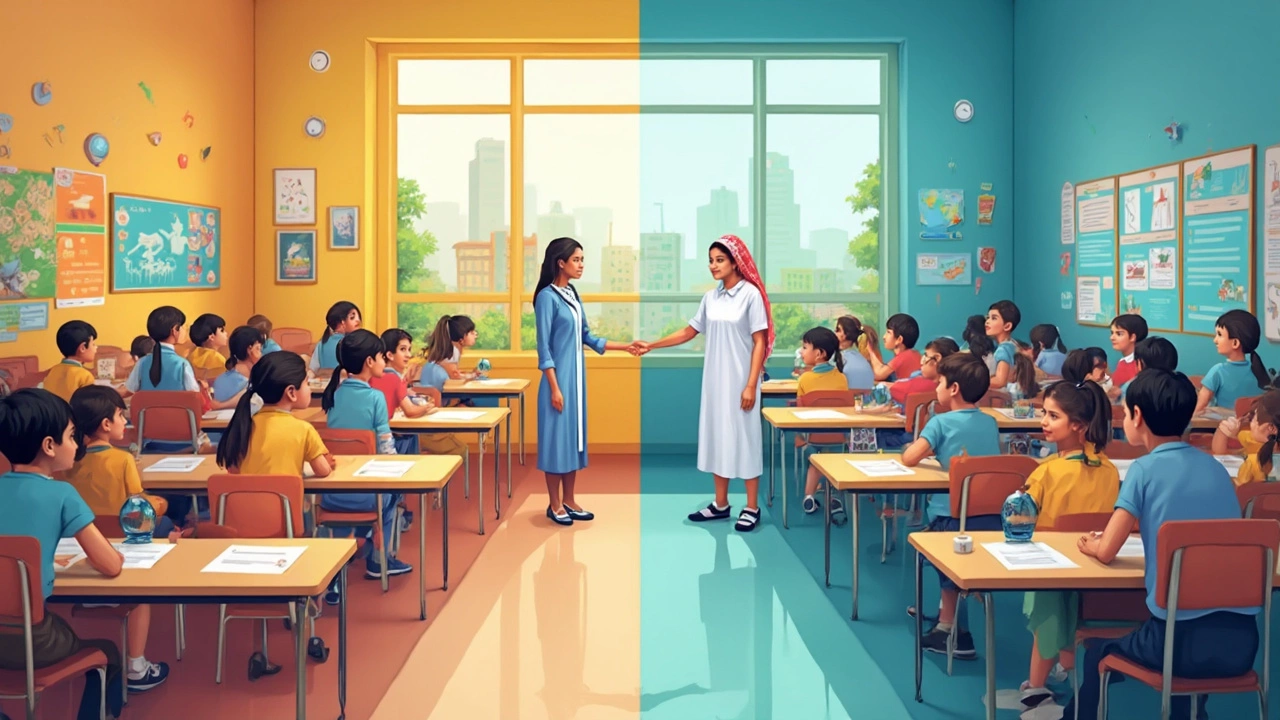
So you've probably heard that Dubai has some of the most polished-looking schools in the world. Marble floors, swimming pools, and AC classrooms everywhere. If your family is on the move and you're comparing education in Dubai and India, especially for the CBSE syllabus, things can get confusing fast. On paper, the CBSE curriculum should be identical, but, as any parent or student will tell you, what happens inside the classroom is a whole different story.
Parents want more than just good marks—they want healthy routines, great teachers, and an environment where kids build confidence. Dubai and India both have serious CBSE setups, but each comes with its own twists, perks, and headaches. Wondering if Dubai gives your child an edge, or if it's just a fancy backdrop for the same old exam stress? You're about to find out what's actually different, and which details matter more than you think when picking the right school for your family.
- CBSE Syllabus: Same Textbooks, Different Setup?
- Teaching Styles and Daily Life: What Really Changes
- School Fees, Diversity, and Opportunities
- Student Experiences: Does Dubai Have the Edge?
CBSE Syllabus: Same Textbooks, Different Setup?
On paper, the CBSE syllabus in Dubai and India is the same. You’ll see exactly the same textbooks, exam pattern, and grading system. Schools in both countries answer to the Central Board of Secondary Education in India. The curriculum covers the same subjects, so don’t worry about gaps if your kid moves between the two countries.
But here’s the thing: the way schools run the syllabus can be worlds apart. In Dubai, many schools tweak the day-to-day routines to match an international setting. You might notice a bigger focus on English communication, interactive teaching, and project-based learning. In India, some traditional CBSE schools still lean more on chalk-and-talk, taking a stricter exam-focused approach. In Dubai, classroom sizes are usually smaller, which often means more attention for each student (think 20 to 25 kids per class versus 35+ in India’s crowded cities).
Teachers in Dubai’s CBSE schools often come from India, so the subject knowledge is usually on par. However, Dubai schools tend to have better access to smart boards, digital labs, and science equipment. Schools here are under pressure from government bodies like KHDA (Knowledge and Human Development Authority) to constantly upgrade facilities. Plus, when Dubai parents pay hefty fees, they expect modern, tech-friendly learning spaces.
The assessment style can also feel different. For example, some Indian CBSE schools focus heavily on exams and textbook answers. In Dubai, the same CBSE syllabus might get delivered with extra group work, real-world projects, and presentations.
Here’s a quick comparison that sums it up:
| Aspect | India (Avg. CBSE School) | Dubai (CBSE School) |
|---|---|---|
| Textbooks | NCERT (Official CBSE) | NCERT (Official CBSE) |
| Classroom Size | 30-45 students | 20-30 students |
| Facilities | Basic labs, some digital boards | Smart boards, AC, advanced labs |
| Teaching Style | More lecture & rote learning | Interactive, project-based |
So, while the backbone of the education—the CBSE syllabus—stays the same, the way it’s taught and the student experience isn’t. If your priority is exposure, smaller classes, and a more global vibe, Dubai’s setup has its perks. If you want pure academic rigor and competitive spirit for board exams, some Indian CBSE schools still nail that with their old-school approach.
Teaching Styles and Daily Life: What Really Changes
If you’re picturing a typical CBSE syllabus classroom, you might expect a teacher at the blackboard, kids taking notes, maybe the occasional quiz. But step into a Dubai CBSE school and things feel a bit different compared to most Indian schools. There’s way more use of technology. Classroom lessons often use smartboards, not chalk. It’s not unusual for teachers to share homework or study guides through apps or digital platforms, so students don’t always have to carry those heavy backpacks.
Teachers in Dubai schools are usually trained to create a more “interactive” vibe. Think more group work, project-based learning, short presentations, or even debates right in class. In India, the teaching style can be a bit more old school, with the focus leaning heavily on theory, lectures, and preparing for board exams. Sure, you find exceptions in both countries, especially in private schools, but this is how most folks describe the average experience.
Here’s a quick comparison:
| Feature | Dubai CBSE Schools | India CBSE Schools |
|---|---|---|
| Classroom Tech | Smartboards, tablets, e-learning platforms | Mostly blackboards, limited tech in many places |
| Teaching Style | Project work, open discussions, group tasks | Lectures, note-taking, board exam focus |
| Homework | Digital assignments common | Paper-based, notebook heavy |
Daily life also feels different. Dubai schools are strict about punctuality, uniforms, and respect. It’s not just rules on paper—they’re pretty serious about them day-to-day. You’ll see a mixed crowd: kids from all over the world, not just Indians, so there’s a big focus on tolerance and learning about other cultures. School buses are safe and tracked by GPS, and campuses usually have big sports fields, AC lunch halls, and sometimes even swimming lessons built in.
In many Indian CBSE schools, community feels more localized—festivals, local language days, and cricket matches shape the vibe. Classes often feel more packed, and activities outside academics might not get as much spotlight, especially in densely populated cities where space is tight.
One interesting bit: studies in 2023 found that Dubai CBSE students reported higher satisfaction with their learning environment, mainly thanks to smaller class sizes and more exposure to modern teaching methods. But this doesn’t mean all Dubai schools are perfect, or that you can’t find excellent, forward-thinking schools in India—it all depends on the specific school and what you value most.
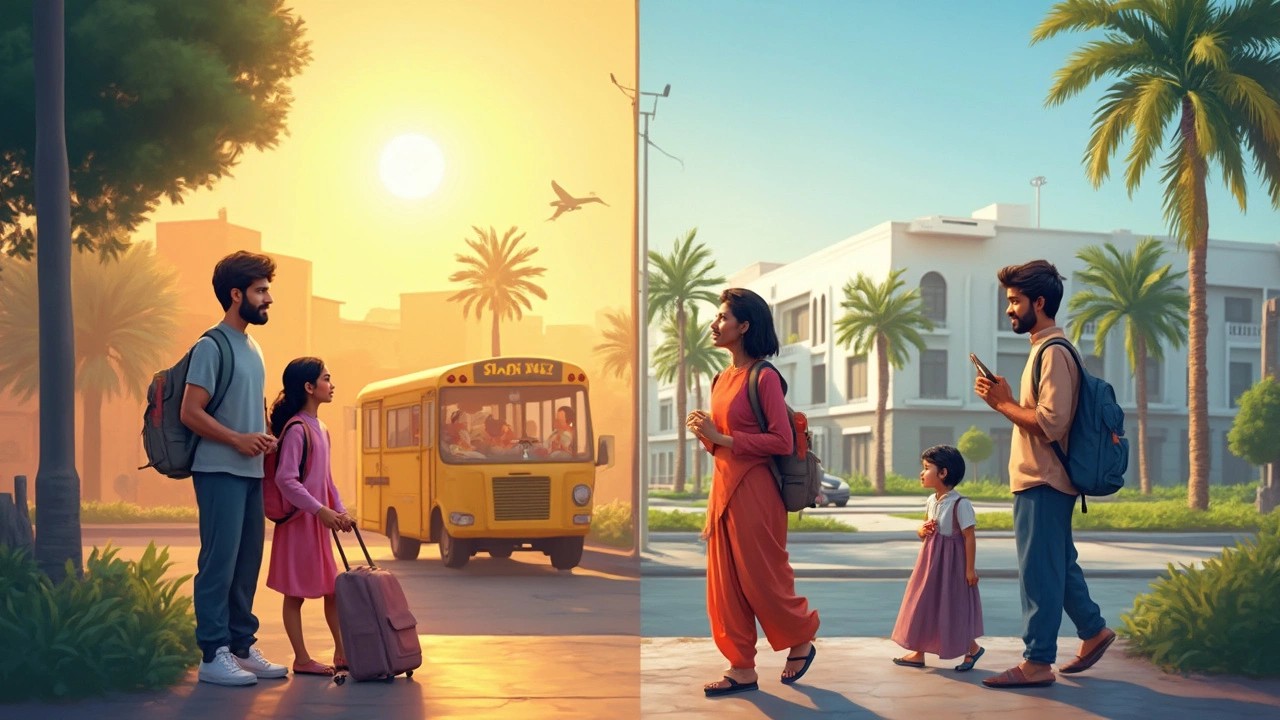
School Fees, Diversity, and Opportunities
Money talks, especially when you're looking at Dubai education versus India. Dubai's CBSE schools charge higher fees compared to even well-known private schools in big Indian cities. For example, annual fees at top Dubai CBSE schools often sit between AED 10,000 and AED 35,000 (that’s roughly ₹2.2 lakh to ₹7.7 lakh).
| Location | Average Annual CBSE School Fee |
|---|---|
| Dubai | AED 15,000 (~₹3.3 lakh) |
| Mumbai | ₹1.5 lakh |
| Delhi | ₹1.2 lakh |
That gap isn’t small. While Dubai’s fees might sting, they often include extras like uniforms, after-school clubs, and almost always, air-conditioned everything. In India, lots of these are separate charges. You really need to read the fine print on what your fees cover.
Now, let’s talk diversity. Dubai is like a mini United Nations—classrooms have kids from every corner of the world, many from India but also Pakistan, Egypt, the Philippines, and dozens of other countries. That means lots of cultural events, new food, and different languages buzzing around. Lots of parents say this mix builds global confidence in their kids in ways Indian schools usually can’t match.
Job-wise, Dubai’s schools are strict about teacher qualifications, pulling in trained staff from India and elsewhere. It’s common to find Indian teachers, especially in CBSE schools, who know the system inside out. However, there’s also a rule in Dubai (KHDA standards) that teachers have to get regular training and take feedback seriously—something that’s only just starting to catch on across many Indian boards.
And then there are the opportunities outside textbooks. Dubai schools put a lot of effort into sports, tech clubs, entrepreneurship days, and leadership programs. One Dubai principal recently said:
“Parents come for the CBSE curriculum, but they stay for the career guidance and cultural experiences. Our graduates are often better prepared for universities abroad.”
That’s because Dubai’s schools usually have strong counseling setups, partnerships with local companies, and even host real university fairs on campus. Many students get to intern or volunteer with global brands—good luck finding that in a typical Indian school unless it’s top tier.
On the flip side, India still wins when it comes to the sheer range of school choices at different price points. Middle-class families can find decent CBSE schools for a much lower price, often closer to home and family, which means stronger support systems outside school hours.
Student Experiences: Does Dubai Have the Edge?
Ask students who’ve lived and attended CBSE syllabus schools in both Dubai and India, and you’ll hear totally different stories, even if the textbooks look the same. In Dubai, diversity is baked into everyday life. Classrooms are filled with kids from India, Pakistan, the Philippines, Egypt, and more. Just finding out how other cultures approach project work or festivals makes school a bit more interesting—and less about rote learning.
Extracurriculars hit different too. Dubai schools are big on after-class activities: coding clubs, debate, sports, and robotics get real attention and funding. Some Indian CBSE schools definitely have great after-school programs, but a bunch of them focus mostly on exam prep. Kids in Dubai end up building soft skills—public speaking, teamwork, confidence—that sometimes get lost when studying in a test-heavy environment.
Facilities also play a role. This isn’t just about showing off: better labs, sports fields, or libraries mean projects and science experiments go smoother, and kids actually get to apply what they learn. Sometimes it directly supports grades. For example, in the 2023-24 CBSE results for Dubai, a higher percentage of students scored above 90% compared to many metro Indian cities. Here's a quick look:
| Location | CBSE Schools | % Students Scoring 90%+ |
|---|---|---|
| Dubai | 80+ | 18% |
| Delhi NCR | 400+ | 13% |
| Mumbai | 300+ | 11% |
Of course, this doesn’t mean Dubai has it all sorted. Some kids miss the festival spirit or grounded attitude of schools in India. A few find Dubai’s focus on discipline and presentation a bit too polished, almost like training for a corporate job. And tuition fees in Dubai can be wild compared to India—even everyday field trips or annual functions might have extra charges.
Bottom line: if you want all-rounder development, solid English exposure, and a global friend circle, Dubai might just offer an edge. But real connections with Indian culture or a more homegrown vibe aren’t as easy to recreate in overseas schools. For families moving, it’s worth weighing these trade-offs closely.

